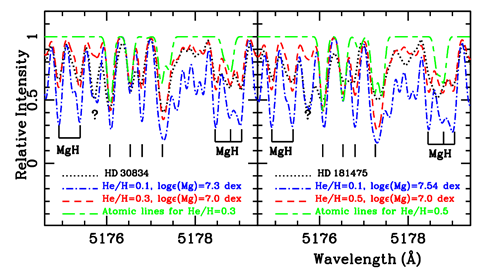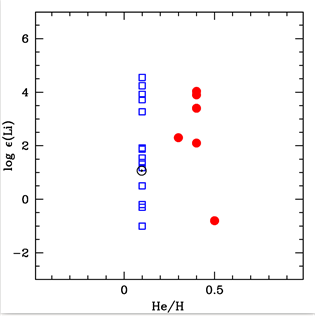Ministry of Science & Technology
Astronomers unearth unexpected chemical link during stellar evolution
Posted On:
14 NOV 2025 3:37PM by PIB Delhi
A new study has traced a link between Lithium-rich red giant stars and their enhanced Helium abundance, using data from the Himalayan Chandra Telescope and other archival data. The study gives a new lead to the evolution of cool giant stars along the red giant phase.
Helium, the most abundant element next to hydrogen, plays a crucial role in measuring the abundances of other key elements accurately, and also to understand the structure and evolutionary history of stars. The helium abundance in stars is measured using indirect methods as it is not directly observable from the star’s surface. Particularly in cool stars, like our Sun and other cooler giants, the surface temperature is not sufficient to excite helium to produce observable spectral lines. Hence, helium abundance is inferred by analyzing the effects on a star’s structure, evolution and other observable elements and molecules.
The change in hydrogen and helium abundance is relative. If there is reduction in hydrogen, helium is enhanced proportionally.

Fig 1. The observed and the synthetic spectra of MgH band for the He-enhanced (He/H > 0.1) stars.
In a study by astronomers at the Indian Institute of Astrophysics (IIA), an autonomous institute of the Department of Science and Technology (DST) researchers measured the Hydrogen abundance, and any departure from its standard value, by comparing the magnesium abundances derived from its atomic versus molecular spectral lines.
This departure in hydrogen abundance was then translated to the corresponding helium abundance using the model atmospheres computed for differing values of hydrogen to helium ratio (He/H ratio). This method was also effectively used by the team for determining the Helium abundance of the Sun in an earlier work.
“We applied this method to a sample of cool giant stars to study the correlation between the lithium and the helium abundances. This sample, consisting of 18 red giant stars and 2 super giant stars, was studied using high-resolution spectra obtained primarily from the Himalayan Chandra Telescope in Hanle, Ladakh, operated by IIA, as well as from the archives of various telescopes worldwide”, said B. P. Hema, lead author of the study published in Astrophysical Journal (ApJ) of the American Astronomical Society (AAS).

Fig 2. The lithium-abundance, log ε(lithium), for the program stars vs. the (He/H). The open blue squares are the stars with normal He/H ratios (He/H = 0.1) and the filled red circles are the He-enhanced ones (He/H > 0.1).
The effective temperature, surface gravity and the abundances of 23 different elements were calculated by analyzing both atomic lines and molecular bands. These analyses were carried out by adopting the models constructed with appropriate He/H ratios that return very similar Mg abundances from the lines of MgH and Mg I. Of the 20 program stars, six were determined to have higher He/H ratio (enhancement in helium) than the standard value of 0.1. Among these six giants, five are red giants, and one is a super-giant.
Explains Gajendra Pandey, co-author and a professor at IIA, “the key result of this work is that all the helium enhanced red giants were found to be super-lithium rich, the exception being the super-giant star. But all the lithium rich giants are not helium enhanced. This indicates that the photo spheric helium enrichment is accompanied by the lithium enrichment in giants, as we had envisaged”.
This is the first spectroscopic measurement of photo spheric helium abundance in normal and lithium-rich field giants. The helium enriched giants showing lithium enrichment are observed all across the red giant evolutionary phase, which is yet another result of this work.
The paper can be downloaded from https://iopscience.iop.org/article/10.3847/1538-4357/adea40
****
NKR/AK
(Release ID: 2190008)
Visitor Counter : 156